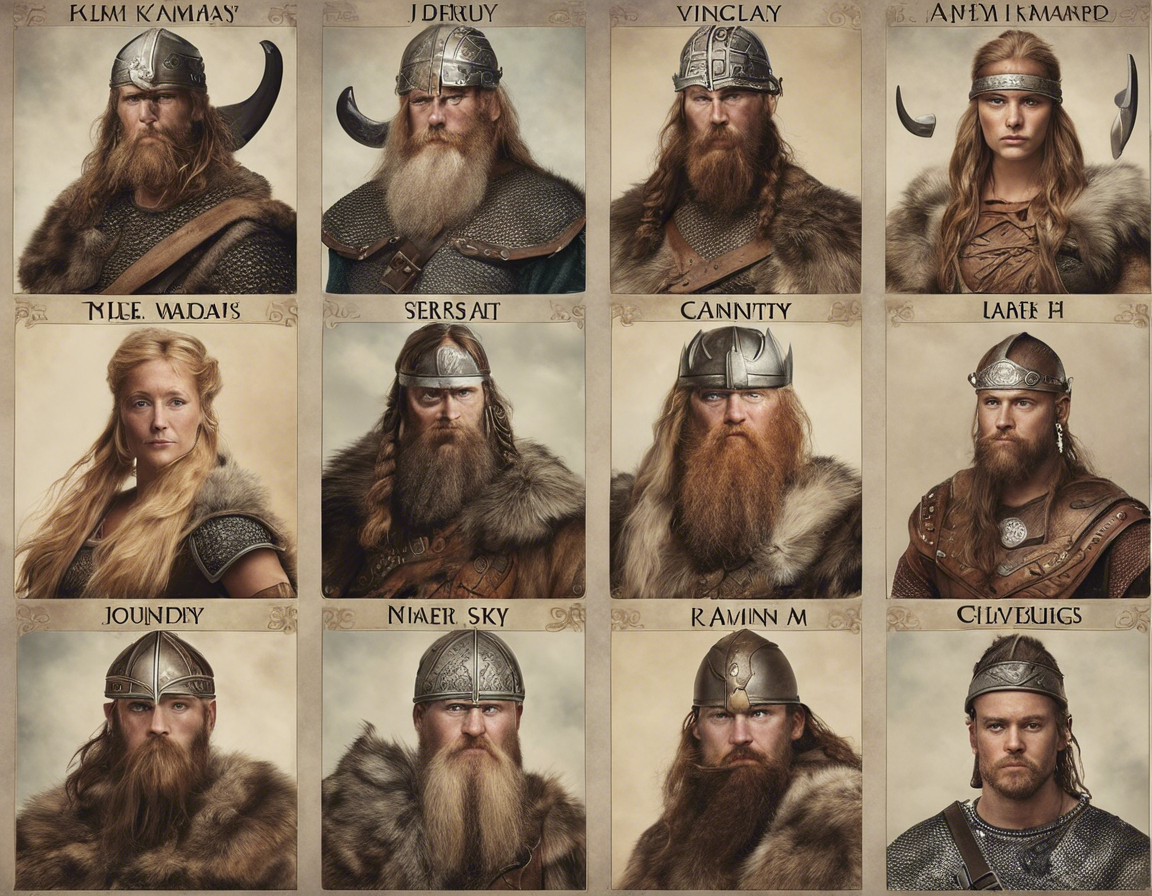Have you ever wondered about the origins of last names that sound like they belong in Viking sagas? The Vikings, known for their daring sea voyages, fierce battles, and rich mythology, have left a lasting impact on modern culture. One aspect of Viking heritage that continues to intrigue people is their naming conventions. In this comprehensive guide, we will delve into the world of Viking last names, exploring their significance, evolution, and examples that have survived to the present day.
The Legacy of Viking Last Names
Understanding Viking Naming Traditions
In Viking society, individuals were typically identified by a given name followed by a patronymic, which indicated the person’s parentage. For example, if a man named Erik had a son named Leif, Leif’s full name would be Leif Eriksson, meaning Leif, son of Erik. This system of patronymics is the reason why most Viking last names end in -son or -dottir, indicating son of or daughter of respectively.
Evolution of Viking Surnames
Over time, as societies became more complex, surnames became hereditary and started to be passed down from generation to generation. This transition from patronymics to fixed surnames was influenced by factors such as land ownership, occupation, and physical characteristics. As a result, some Viking surnames are based on the names of ancestral lands (e.g., Norway, Denmark), while others reflect the family’s profession (e.g., Smith, Weaver).
Common Types of Viking Last Names
Patronymic Surnames
- Anderson – Son of Anders
- Eriksen – Son of Erik
- Ragnarsdottir – Daughter of Ragnar
Topographic Surnames
- Lund – Grove or Wood
- Berg – Mountain or Hill
- Holm – Island
Occupational Surnames
- Skald – Bard or Poet
- Smed – Smith
- Farar – Traveler or Sailor
Descriptive Surnames
- Stark – Strong
- Svart – Black
- Raud – Red
Relationship Surnames
- Kinsman – Relative
- Broder – Brother
- Fadersen – Father’s Son
Famous Viking Last Names
Ragnarsson
One of the most famous Viking last names, Ragnarsson, is associated with the legendary Norse hero Ragnar Lodbrok. Ragnarsson means son of Ragnar, highlighting the hero’s paternal lineage.
Haraldsdottir
Another prominent Viking last name is Haraldsdottir, which translates to daughter of Harald. This surname is linked to historical figures like Harald Fairhair, the first King of Norway.
Erikson
The name Erikson, meaning son of Erik, is well-known due to Leif Erikson, the Norse explorer believed to have reached North America around the year 1000.
FAQ: Unraveling the Mysteries of Viking Last Names
- What are the characteristics of Viking last names?
-
Viking last names are often patronymic, topographic, occupational, descriptive, or relationship-based.
-
How did Vikings use surnames?
-
Vikings used surnames to indicate paternity or describe aspects of a person’s life such as their occupation or physical features.
-
Are Viking surnames still in use today?
-
Yes, many Viking surnames have survived to the present day and are found in regions with Norse heritage.
-
What is the significance of -son and -dottir in Viking last names?
-
The suffixes -son and -dottir in Viking last names denote son of and daughter of respectively, reflecting patronymic naming conventions.
-
How were Viking surnames tied to social status?
-
In Viking society, surnames could indicate a person’s lineage, professional standing, or affiliation with a particular clan.
-
Did Viking women have their own surnames?
-
Viking women typically used patronymic last names, such as Ragnarsdottir (daughter of Ragnar), to identify their maternal lineage.
-
Which countries have a strong connection to Viking surnames?
-
Countries like Sweden, Norway, Denmark, and Iceland have a rich tradition of Viking surnames due to their Norse heritage.
-
How can one trace their Viking ancestry through last names?
-
Tracing Viking ancestry through last names involves genealogical research, consulting historical records, and exploring family stories and legends.
-
Are there variations in Viking surnames based on regions?
-
Yes, certain Viking surnames may vary based on the specific region or dialect within the Norse-speaking territories.
-
What other factors influenced the creation of Viking surnames?
- Apart from patronymics, factors like land ownership, trade, and migration played a role in shaping Viking surnames over time.
In conclusion, Viking last names offer a fascinating glimpse into the culture and heritage of these legendary seafarers. By unraveling the stories behind these surnames, we can better appreciate the enduring legacy of the Vikings and their influence on modern naming traditions. Whether you have a Viking surname in your family tree or simply admire the bold spirit of these ancient warriors, exploring the world of Viking last names is sure to ignite your curiosity and imagination.
